Pro Tips from Master HEADSHOT Photographer Peter Hurley
If you’re reading this—and of course you are—you’re in for a treat. Because you’re about to learn everything you need to know about headshot photography while getting a healthy dose of entertainment. Our V-Flat World CEO, Tuvy Lemberg, recently stepped into the lair of the headshot photography king himself, Peter Hurley, for some updated headshots. Watch the video for some hilarious banter and to learn how you can shoot headshots like Peter.
Below: Peter’s pro tips for the best headshot photography. Shoot images that make your headshots rise to the top of the pile and keep your clients coming back for more. Follow these tips to reach that Peter Hurley level of SHABANG!
Headshot Photography Tips from Peter Hurley:
Headshot Photography Tips from Peter Hurley
Accentuate the Jawline
Get rid of double chins and unflattering extra skin by moving the jawline towards the camera. It’s a simple adjustment that makes a world of difference by tightening the skin around the neck and jawline.
Here’s how to do it: If your subject is directly facing the lens, ask them to bring their forehead closer to the camera. If they’re turned in a 3/4 view, have them bring their ear closer to the camera while maintaining the same facial angle. Both of these moves accentuate the jaw by pushing it out from the neck. A solidly defined jawline makes for a flattering headshot.
Your clients may feel weird, but as Peter says, it “feels weird, looks good.” When it comes to headshot photography, you might feel weird jutting your head out like a bird, but your jawline will thank you.


Squinch the Eyes
What’s the “squinch,” you ask? According to Peter, it’s a “narrowing of the distance between the lower eyelid and the pupil.” Not to be confused with a squint, the squinch is much more subtle. A squint would be overkill and far too narrow to see the eyes. And we want to see the eyes – but not too much. This isn’t anime. This is headshot photography, where a wide-eyed, deer-in-the-headlights look doesn’t translate well. Instead, do the “squinch” and instantly take your headshot from blah to cool.



Give a Hint of a Smile
According to Peter, approachability comes from the mouth. Smile just a bit “for approachability so you don’t look like a prick,” Peter says. Well said, Peter, well said. We have nothing to say to improve upon that. So let’s move on.
Find the Best Side of the Face
Photograph your subject from the front, left, and right side to determine their most photogenic side. A very small percentage of people (about 1-2%) are blessed with being “ambifacial,” as Peter calls it. Meaning they photograph well from all angles. (Lucky…) Those who are ambifacial tend to have symmetrical faces. The rest of us live with an ear or eye that’s lower than the other or a nose that tilts to one side. No worries. Find the best angle and get shooting.

Drop the Front Shoulder
It’s not something you have to do in every one of your headshots, but sometimes it makes sense to turn your subject to about a 3/4 view of the side and have them drop their front shoulder. This lengthens the neck and tightens up excess skin around the neck and jawline.
Don’t Lean Back
Leaning your subject back causes them to tuck their chin, which leads to double chins. Instead, lean your subject toward the camera to tighten the skin around the jawline and get rid of any loose bulges around the face and neck.
Don’t Overdo It
In your zeal to get the best headshot in the history of headshots, don’t overdo it. Subtle moves are key. Lean your client forward – but not too forward. Push the jaw forward – but not too much. Drop the shoulder – but don’t drop it too much. You get the idea.
“I hate overleaning,” Peter says. “Everything that I do is subtle. Once I see where it needs to be, then I’m shooting like a madman. I’m making sure they’re comfortable in that position.”
Don’t Be Weird
With all the headshot photography tips so far, if anything looks weird, don’t do it. Chances are, you’ve gone too far. Remember, subtlety is key. If it looks weird, don’t make your client do it and don’t shoot it.
Show the Photos to Your Subject
“If you can, show them the picture so they understand what it looks like and they don’t just feel weird,” Peter says. Show your clients a few frames so they can see for themselves that all the directing and awkward-feeling movements actually look amazing. Once your clients see the results for themselves, you’ll build their trust in your abilities and they’ll feel much more confident and relaxed. This makes your job easier as a headshot photographer because now they’re willing to pose in whatever direction you tell them to, no matter how awkward it feels.
Light It Well
According to Peter, “You need to get really nice light. Probably the Peter Hurley Cine Kit from Westcott.” (wink, wink) The man has earned his reputation as the King of Headshot Photography and has his own gear to prove it. If we were in his position, we’d push our lights, too. The lighting gear used in our video with Peter is the Westcott Flex Cine Peter Hurley Bi-Color Studio Kit… along with two V-Flats, of course, black side out.
For female subjects or anyone wanting soft light, Peter often lights from both sides of the face as well as from below, configuring his lights in a triangle shape around his subjects. Other times, he’ll light with four panels: top, bottom, left, and right. For his male subjects (or anyone wanting a bit more drama in the light), Peter tends to light from the side with less fill on the bottom and opposite side of the face. And when he feels it’s necessary, he’ll use a kicker in the back to pop the subject off the background and to add definition to the face.

Talk to Your Subject and Direct Them
Peter considers direction “the final ingredient in portraiture.” As a headshot photographer, he says, “Your job is to create that connection with the human being in front of your camera.” This builds trust, puts your subject at ease, and makes for better headshots.
Most people don’t know how to move and manipulate their face in front of a camera. Even if they do, they still need tips and direction from you as the headshot photographer to guide them to the best angle for their headshot. You’ll notice Peter keeps up a lot of banter during his shoots, maintaining an atmosphere that’s light, casual, and fun. The mood and tone he sets as the photographer is what translates into his subjects. He gets his clients to a place where they feel comfortable and trust his direction on how to pose.
So talk to your subjects; try surprising them with your words to get something expressive. Peter explains, “Get ‘em to do something with their face and you’re good.”
Make ‘em Laugh
Laughter is the best way to break the ice and put your subjects at ease. If you watch any of Peter’s videos on how to take headshots, you’ll notice he’s full of quick-witted humor. He’ll even throw in several "Hurleyisms." These one-liners are meant to get an expressive reaction from your clients to get you on your way to an excellent headshot. Case in point: minute 3:17 in our video with an unexpected Hurleyism that got Tuvy to laugh.
Confuse ‘em
Go to minute 4:24 in our video to watch how Peter effortlessly spouts out confusing commands to Tuvy in an attempt to get some energy and visual interest out of his headshot. In a remarkable display of composure, it took a bit to break Tuvy from his modeling career, but Peter eventually got the facial expression and laughter he was after because, as Peter says, “I like to confuse my subjects, on purpose.”
And hey, we got this:

Keep the Energy Up
Everything we’ve talked about above is what gives a headshot energy and keeps the image from going flat. Boring headshots lack energy. When it comes to headshot photography, give the shoot and your subjects some energy by employing all the tips we’ve talked about and your clients will return what you give them.
All of This... To Get That "Lookability"
Peter says, “Lookability is the image’s ability to secure attention from an onlooker. I want them to stop the scroll, stop the feed, look at the LinkedIn profile. Click on it. Make it bigger. Let’s see what this person’s all about. What is that person giving? What is their essence through the image.”
When a headshot has lookability, it has something to captivate the viewer and stop them in their tracks. Lookability is the element in the eyes, posture, or expression that grips a person and draws them in to stay awhile. A top level headshot is often the deciding factor on whether or not you get your foot in the door. In today’s world, you need every edge you can get. If you need a headshot, make sure you hire a headshot photographer who can shoot images that stand out from the rest.
Final Headshots of V-Flat World CEO Tuvy Lemberg, Shot by Peter Hurley
Let’s take a look at these headshots. What do you guys think? We don’t know about you, but Tuvy looks like a CEO to us. And not a boring CEO, either. Lookin’ pretty snazzy there, buddy.
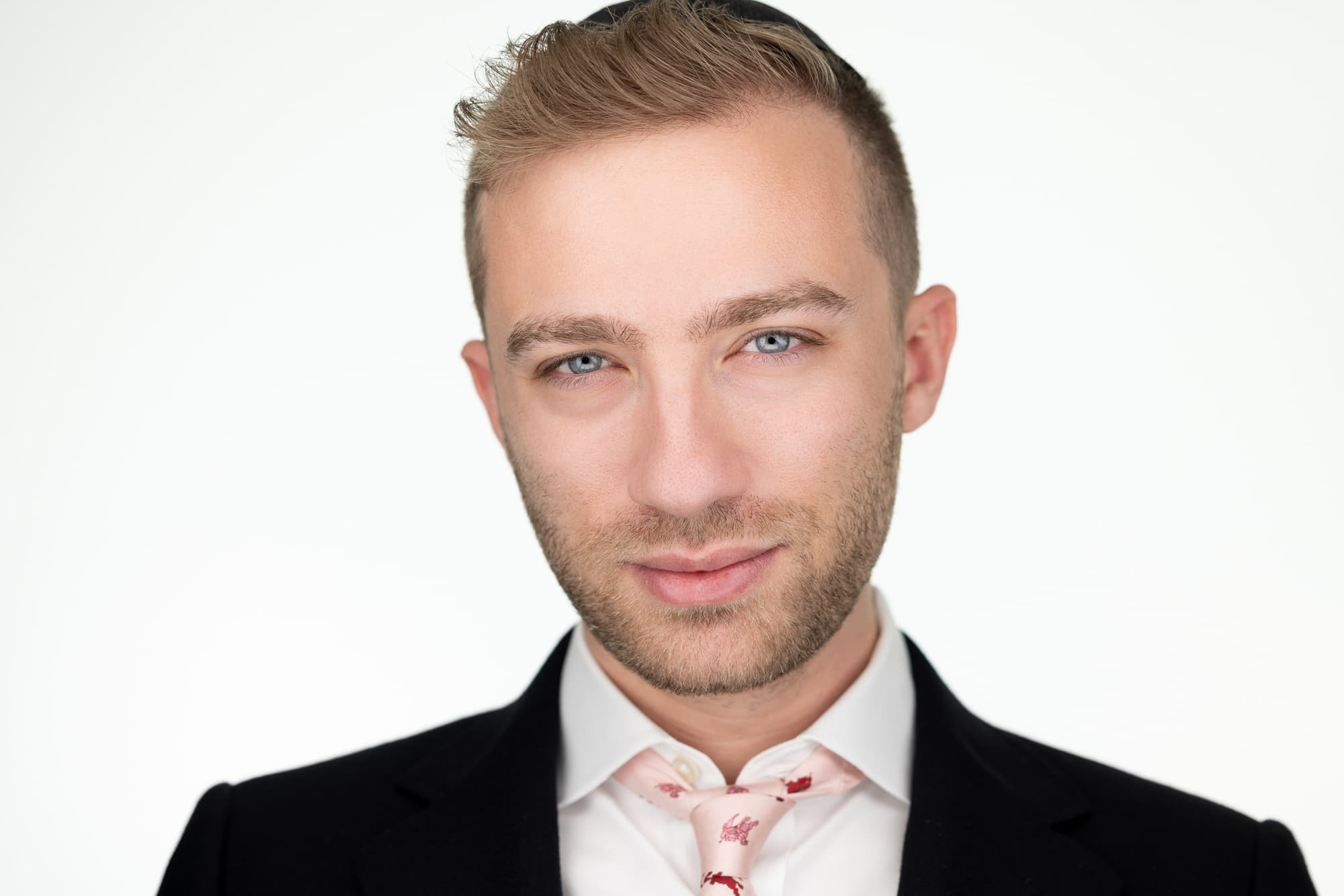

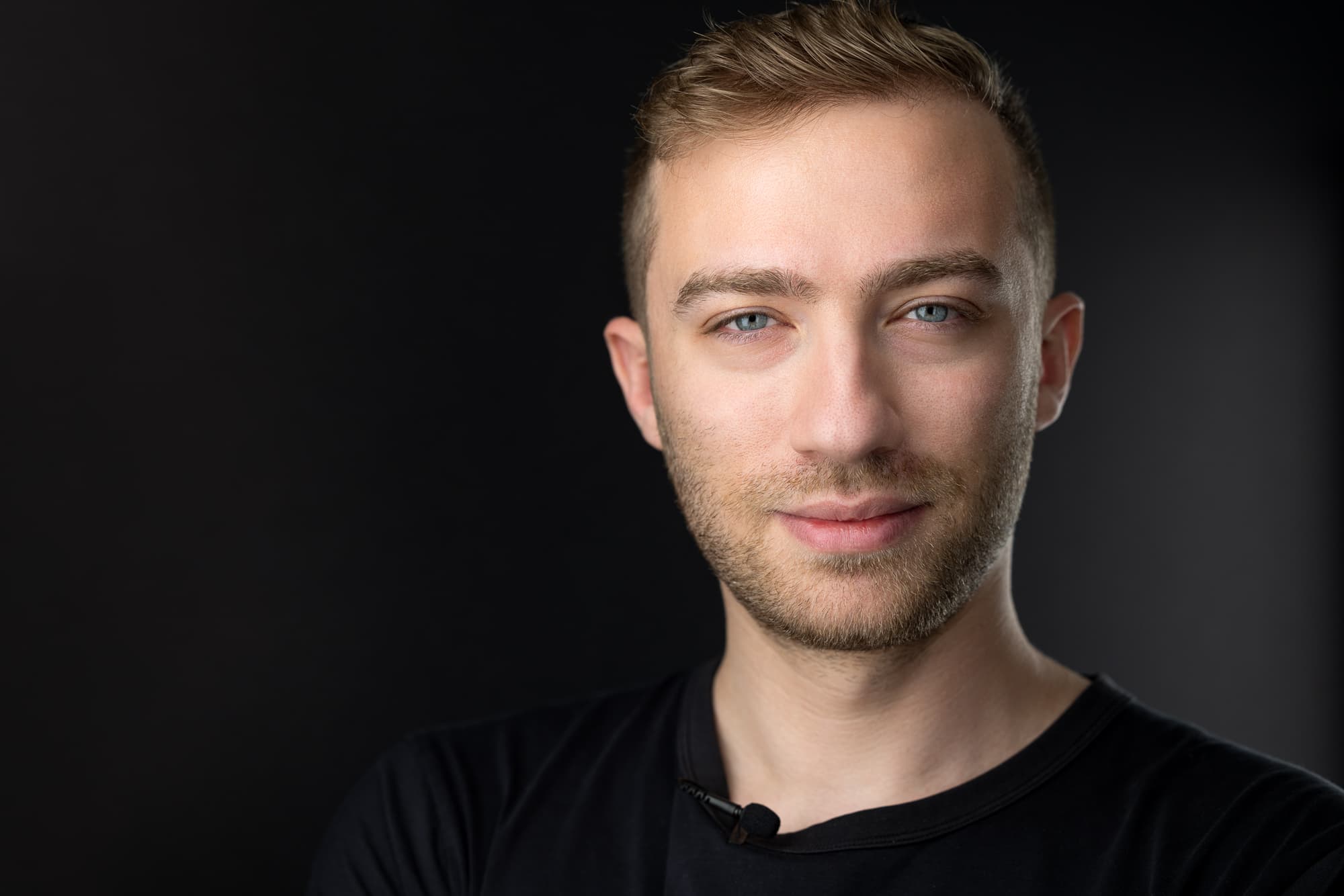
Now that’s some Peter Hurley headshot SHABANG!
Classy and polished, these headshots command respect, yet with an extra bit of alchemy that can only come from the hands of Peter Hurley. It must be that “lookability,” as Peter calls it.
Many thanks to photographer Peter Hurley for spending time with us in his studio and for sharing his best headshot photography tips. Use these tips in your photoshoots and watch your headshot photography instantly improve. You’ll build a stunning headshot portfolio that’ll wow the crowd and get clients clamoring in your door for more.
Gear
Camera: Canon EOS R5
Lens: Canon RF 70-200mm f/2.8 L IS USM
Lighting & Modifiers: Westcott Flex Cine Peter Hurley Bi-Color Studio Kit, Two Foldable V-Flats
Get Connected
Photographer: Peter Hurley, https://peterhurley.com/
Videographer: Samuel Bouret, @samuelbouret
Wanna Learn More?
We’ve got over 100 videos on our Behind the Scenes page with tips and tricks for photographers and videographers of all genres. Learn how to light, shoot, and more.



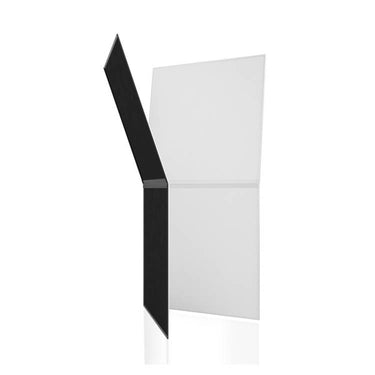
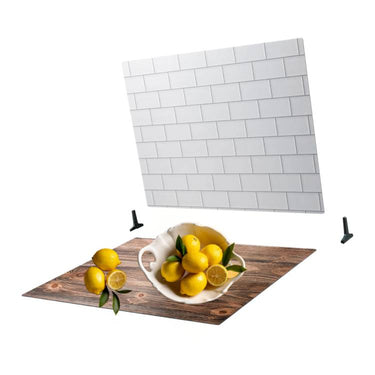
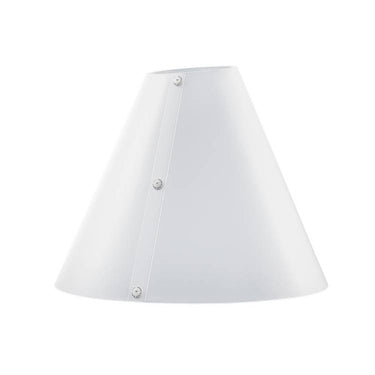
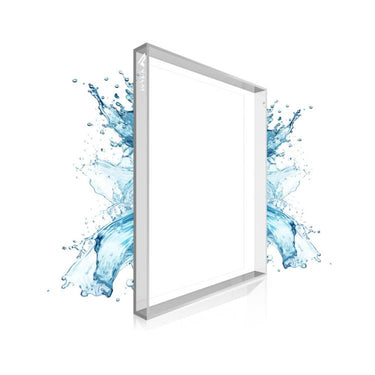
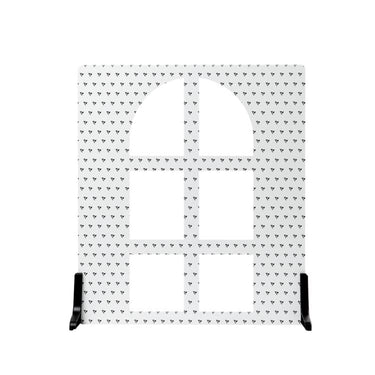
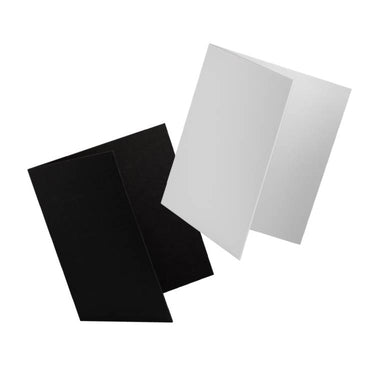



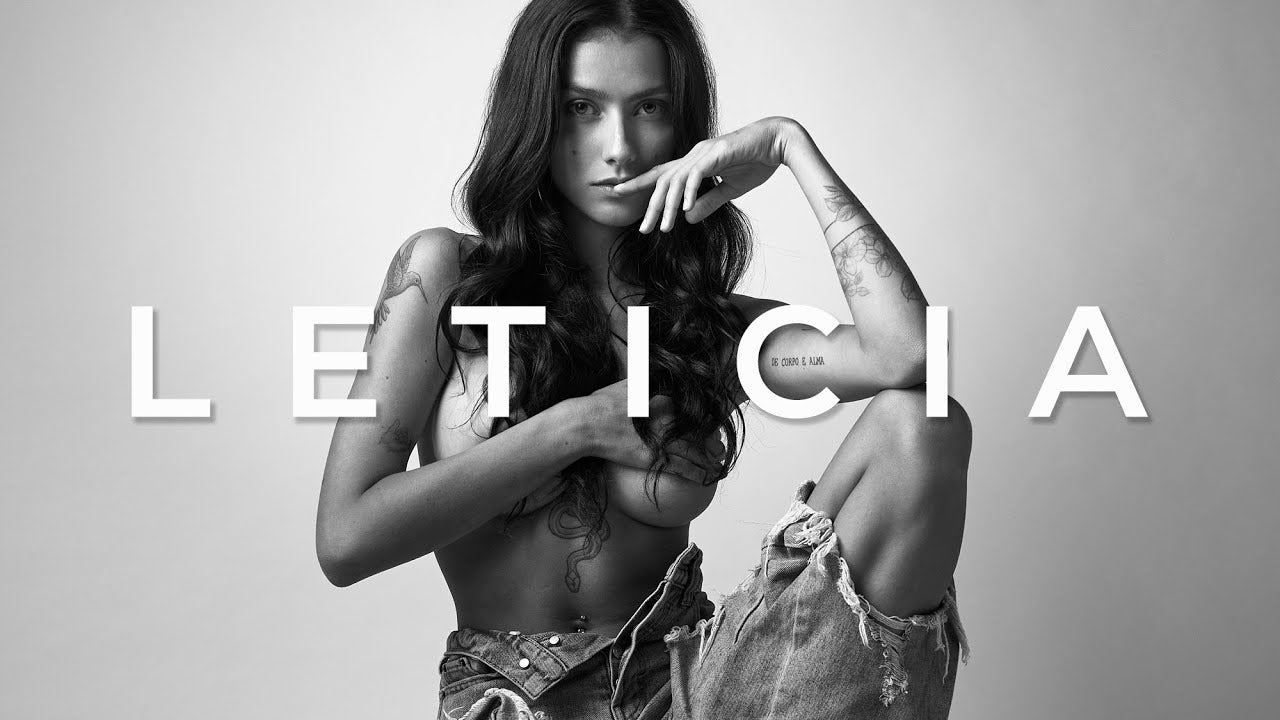
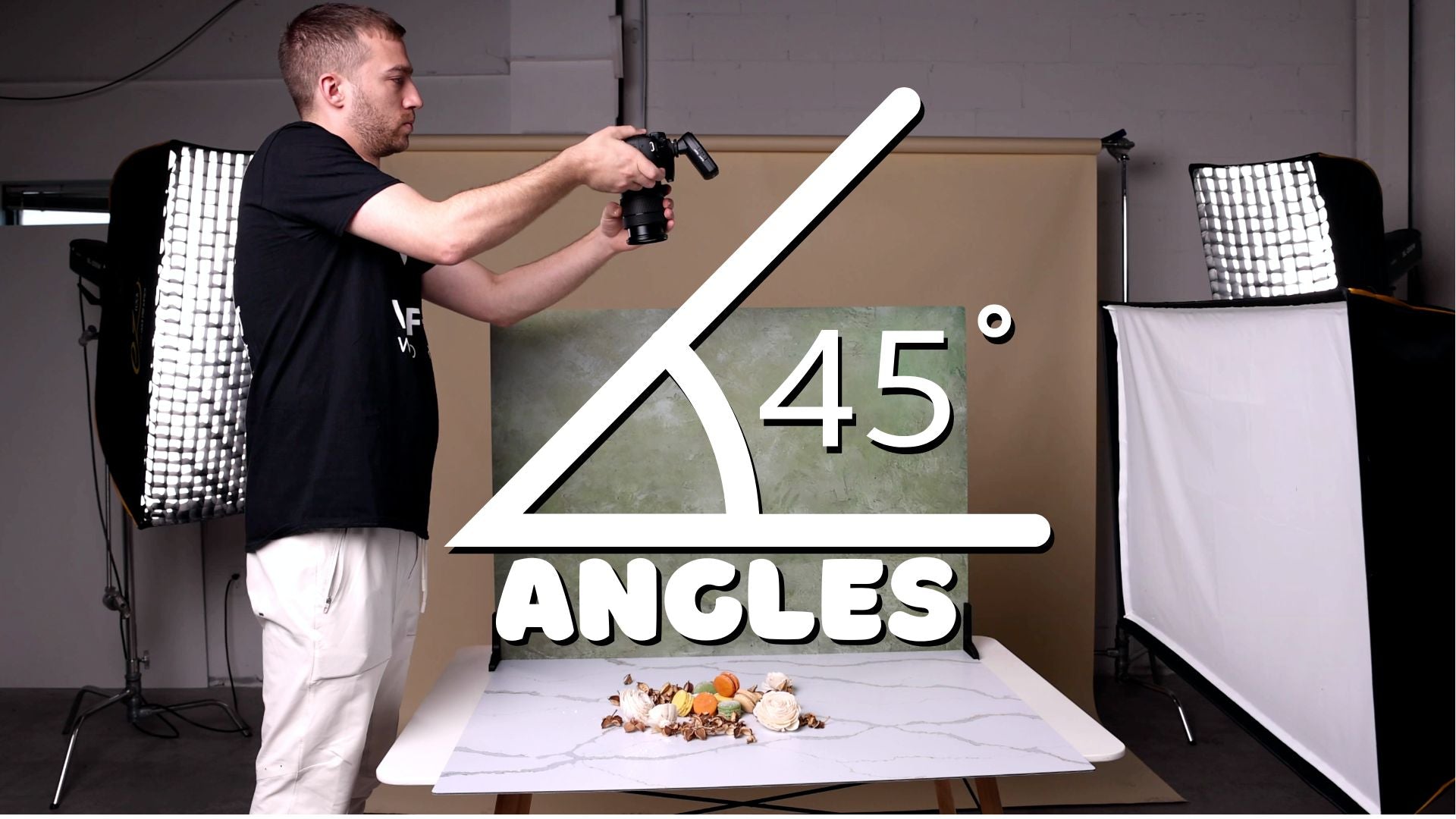
1 comment
I can’t wait to have an experience with this fantastic product
Emmanuel Owusu-prempeh
Leave a comment
This site is protected by hCaptcha and the hCaptcha Privacy Policy and Terms of Service apply.